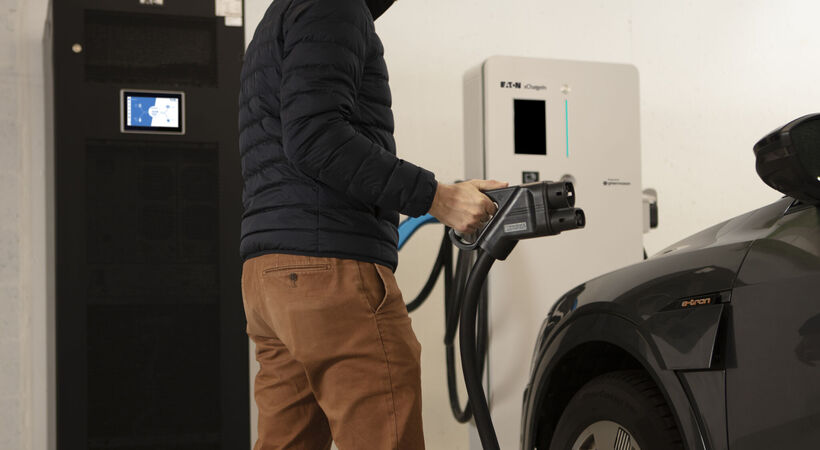Eaton is launching a comprehensive suite of hardware, software and services that can transform buildings into energy hubs that extract maximum benefit from on-site renewable generation. Its ‘Buildings as a Grid’ approach to energy transition and electric vehicle charging has been significantly enhanced following the recent acquisition of Switzerland based Green Motion SA, a leading designer and manufacturer of electric vehicle charging hardware and related software.
Eaton has taken an ‘Everything as a Grid’ approach to the energy transition to help customers accelerate decarbonization, boost resilience, reduce energy costs and create new revenue streams. For building owners, by managing the building energy system as a grid, Eaton can transform facilities into energy hubs that better manage existing electrical infrastructure and plan for future energy needs. This is what is meant by Buildings as a Grid.
If building owners instead choose an ad hoc approach bolting on EV chargers to existing infrastructure, they risk encountering power management difficulties and grid upgrade costs when they need to increase capacity to meet demand. This could happen quickly as the switch to EVs gathers momentum: EV sales in Europe grew by more than 140% in 2020, despite the Covid-19 pandemic, and the number of EVs globally is expected to jump from 8.5 million in 2020 to 116 million in 2030*.
Eaton’s Buildings as a Grid approach constitutes the most comprehensive and integrated energy transition offer for building owners and comprises three systems: EV charging, energy management and power distribution. Together these systems allow building owners to monitor and optimize the energy performance of their building and securely control energy assets. This is what the three systems do:
- EV charging system: this is grid-connected EV charging hardware and software that provides a high level of service for EV charging users, as well as supporting dynamic charging and pricing;
- Energy management system: this improves the resilience of a building’s electrical infrastructure and supports growing requirements for EV charging capacity in the building by providing demand-side flexibility. This is achieved with energy management software that manages energy flows amongst flexible energy assets that could include: EV chargers, energy storage systems, solar inverters and physical controls for heat pumps and boilers.
- Power distribution system: manages electrical power distribution and protection.

